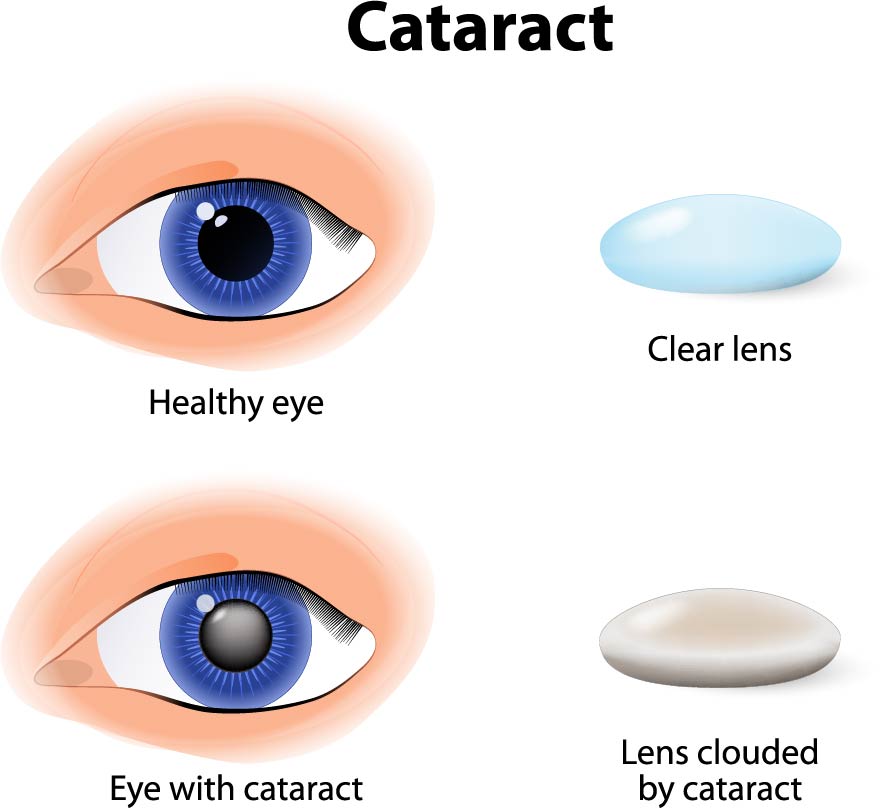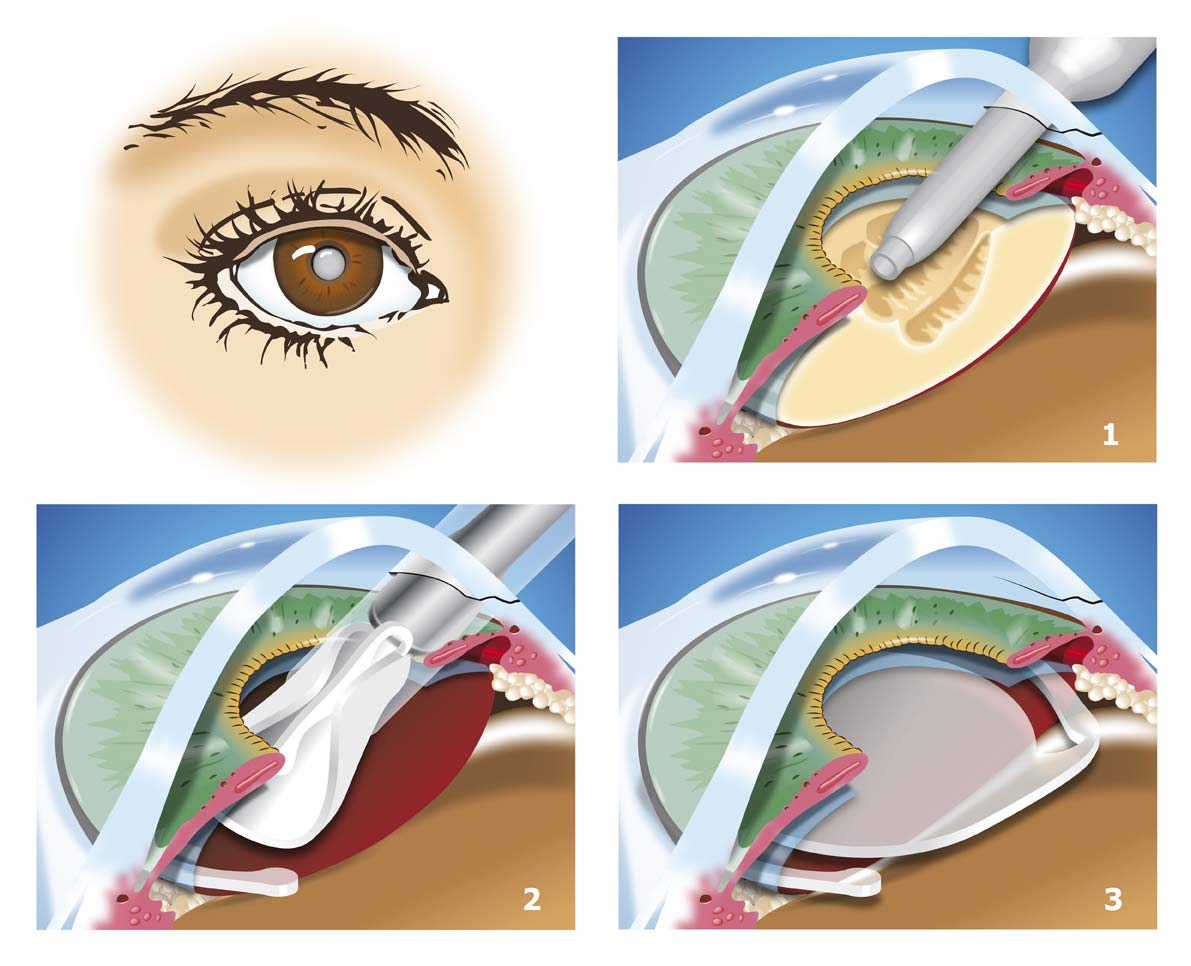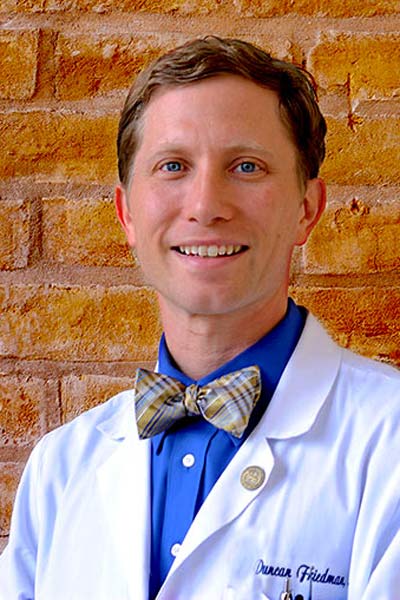Dr. Friedman's Office: (210) 880-3000
Cataracts
My Eye Doctor says I am forming a cataract . . . should I be worried?
The way we see the outside world is dependent on our eye’s ability to focus light onto the back surface of the eye (known as the retina). All light from the outside world comes into our eye, passes through the cornea and then the lens in order for this to happen. Both the cornea and the lens aid in focusing this light correctly.

We start at birth with a clear lens. Although there is such thing as a juvenile cataract or a congenital cataract, most people have no trouble with their lenses throughout their life. As the wear and tear of life affect us, our lenses start to harden and turn yellow. This can be due to sun exposure, poor diet, smoking, diabetes, and other environmental factors. Some people are more affected by this hardening than others.
Often, I equate a cataract to a gumdrop. A gumdrop is simply a formed piece of sugar that is usually springy and easily moves. If you let that gumdrop sit out in the sun for years and years and years, it will become as hard as a rock. It might even get a few cracks in it where the sugar crystals have become too hard. The same holds true for a cataract in the human eye. Over the years, the sugars and lens proteins become hard and less mobile. This compromises the ability to focus light as well as when you were young. The current remedy to this problem is to have cataract surgery.

Before you get all worried about the “s” word and click away from the page, realize that cataract surgery has evolved to a minimally invasive procedure that can be done as a same-day surgery. During cataract surgery, your ophthalmologist will make small incisions through the cornea in the front of the eye. Using special instruments and vibration energy, the lens is broken up into tiny pieces and vacuumed out of the eye. In its place, a new, plastic lens is inserted which helps focus light once again onto the retina (see the adjacent diagram).
You should also be aware that cataract surgery has evolved in the types of implants available. Initially, lenses only helped focus at one point off in the distance. This comes as surprise to many people that thought that they would be able to throw away their glasses after cataract surgery but still need to use reading glasses. Our natural lens gives us the ability to “accommodate” or focus on images up close and at a distance. Over time, we lose this natural ability in a process called presbyopia, but having cataract surgery gets rid of accomodation altogether. Many companies are now making specialized lenses that accommodate by focusing at two points (distance and near) or even move a little inside the eye to change the focal distance in order to see up close. Further, some people with astigmatism can have specialized implants placed in their eyes to correct the eye’s ability to focus. You should talk to your eye surgeon about the different types of lenses and which one would be best for you.
As I remind all of my patients, this is still surgery, and with surgery comes risks. The cataract surgery does not have the same risks as general surgery because it is done with anesthesia placed on, in, or around the eye. In other words, most people do not go to sleep for this surgery. Still, the eye is being cut which leaves it susceptible to pain, infection, and post-operative inflammation. These risks are minimal, and the surgery is done in a sterile environment with good anesthesia to try and minimize the risks, but they are still possible. About 1 in 10,000 people get a serious eye infection (called endophthalmitis) after cataract surgery, so if you experience any increasing pain or decrease in your vision, you need to let your doctor know immediately. This way, they can examine you and determine if further treatment is necessary. Other risks associated with cataract surgery include a need for a second eye surgery, an increased chance for retinal detachment, severe bleeding in the eye, and even loss of the eye if these complications proceed unchecked.
Here is one thing to remember . . . over 3 million cataract surgeries are done in the U.S. each year. This number is likely to increase in the upcoming years as the population ages (N.B., if you haven’t realized already, aging is the main cause for worsening cataracts). Studies have shown that cataract surgery is one of the most beneficial surgeries to people as it usually restores lost sight and improves quality of life. Furthermore, most people with cataract surgery have great outcomes with minimal complications. I reiterate this point to have your eyes examined annually, and if your eye care provider tells you that you are getting a cataract, do not be afraid. It is a condition that is easily treated with great benefit.
Our future articles and posts will focus on different types of cataracts and cataract complications, but for now, please feel free to send any questions to sanantonioeyedoctormd@gmail.com.
Duncan Friedman, M.D.
Ophthalmologist
San Antonio, Texas


